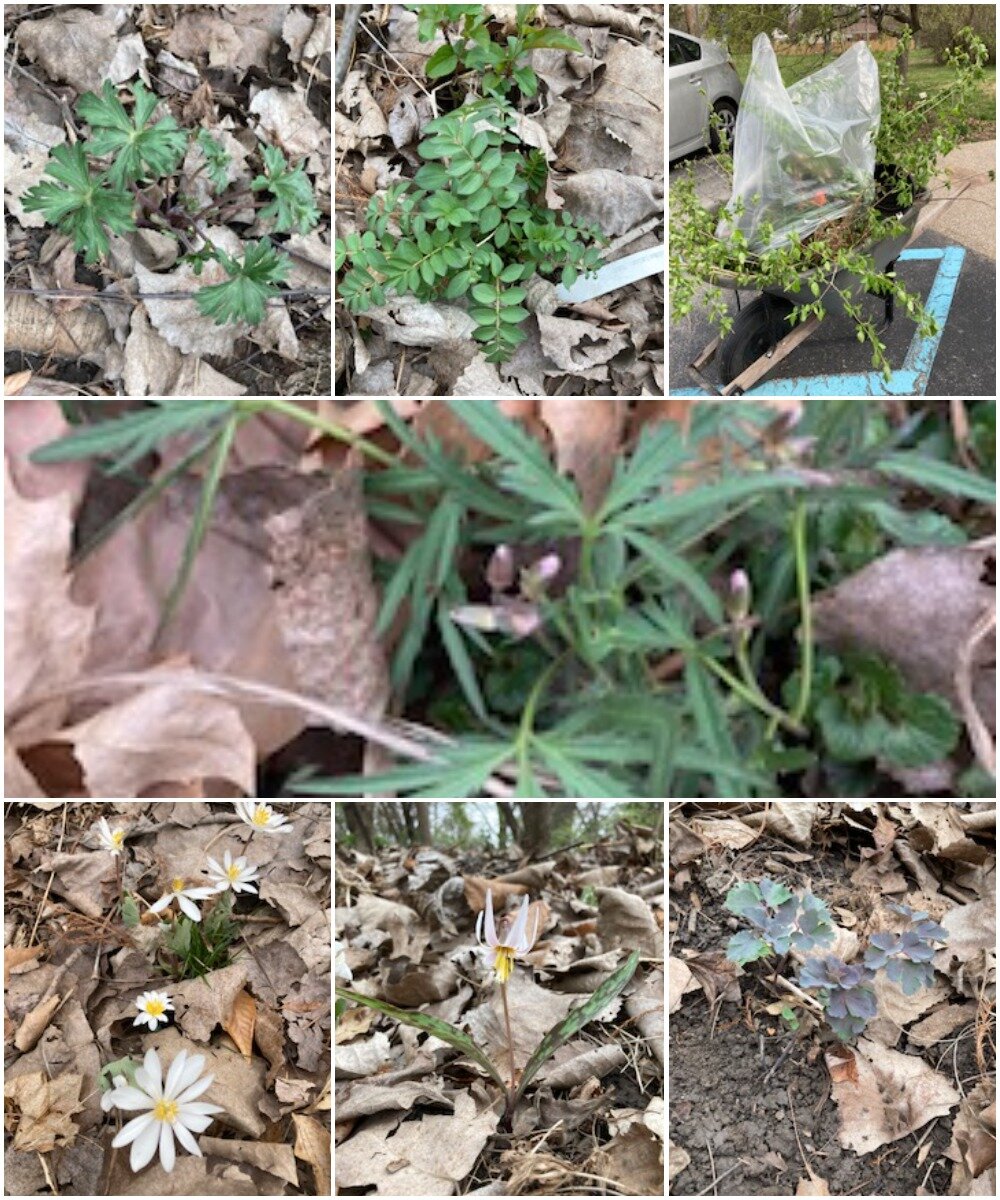Woods Words
As we wander through the Woods in autumn, consider speaking this excerpt from Psalm 96 in your heart in praise of God’s amazing creation.
Psalm 96: 1, 11-12
1 Sing a new song to the Eternal;
sing in one voice to the Eternal, all the earth.
11 And so, let the heavens resound in gladness!
Let joy be the earth’s rhythm as the sea and all its creatures roar.
12 Let the fields grow in triumph, a grand jubilee for all that live there.
Let all the trees of the forest dig in and reach high with songs of joy before the Eternal
We at the Wood’s team are ever mindful of two things: How can we balance supporting native wildlife and keeping maintenance manageable?
With Amy Perry’s inspiration, we are revising the entry plaque area. While the switchgrass is a gorgeous winter backdrop, cutting it back every year and managing the enthusiasm of the native coneflowers is time consuming, so we will be replacing the plantings with lower growing, less aggressive natives. We will transplant prairie drop seed, blue eyed grass, butterfly milkweed and wild petunia around the plaque. These will bloom at different times and be better “behaved” in a smaller planting.
We also hired an ecological restoration company, EcoLogic to do the heavy lifting of invasive removals in the eastern segment of the Woods allowing more native species to thrive.
Something to consider in your home landscape. Oaks provide habitat for over 511 insect species that nourish our birds while they feed their young. With small urban lots, an oak to consider is Quercus prinoides or dwarf chinkapin or chinquapin oak. It usually grows to 20 feet and can tolerate a variety of soil conditions. https://unlgardens.unl.edu/quercus-prinoides-dwarf-chinquapin-oak
Upcoming Events:
November 13: 9 AM Indiana Friends Committee on Legislation. From clerk, Diana Hadley: “Friends, The 2022 legislative session is near, so IFCL will meet by Zoom Saturday, November 13, at 9:00 a.m. to discuss issues and possibilities to serve Hoosier challenges legislatively as Quakers.
Thanks to everyone who worked for redistricting reform through contacts with legislators, attendance at hearings/news conferences and letters/columns in the media. You can review the IFCL effort on our website (www.quakerifcl.org)
under the "News" button. Although new maps have been adopted, the goal for changing the process will continue and be described at the November 13 meeting.” I monitor environmental issues for IFCL.
November 13: 1-5 PM Indiana Native Plant Society Annual Conference, by Zoom. $25 registration fee.
https://indiananativeplants.org/wild-indiana-wilding-indiana-gardens/
November 19 & 20, 2021 Greening the Statehouse: HEC annual gathering by Zoom
https://www.hecweb.org/gts/ $35, $25/students
As always, think about how you can reduce energy waste and promote the circular economy. For ideas, go to https://weather.com/science/environment/news/carbon-footprint-climate-change
Mary B, co-clerk of the Woods Committee
https://homegrownnationalpark.org/about-us We are on the map!
















